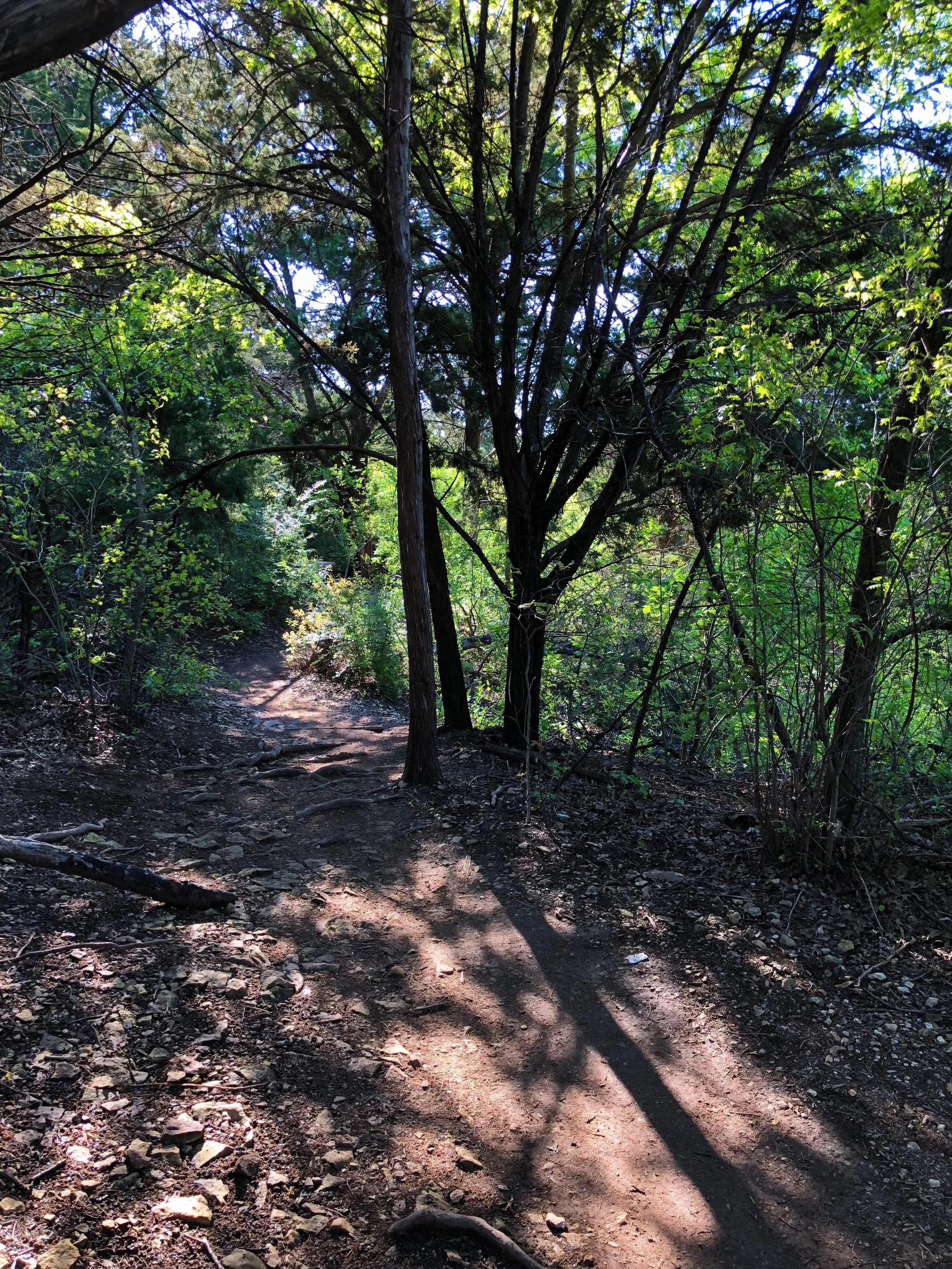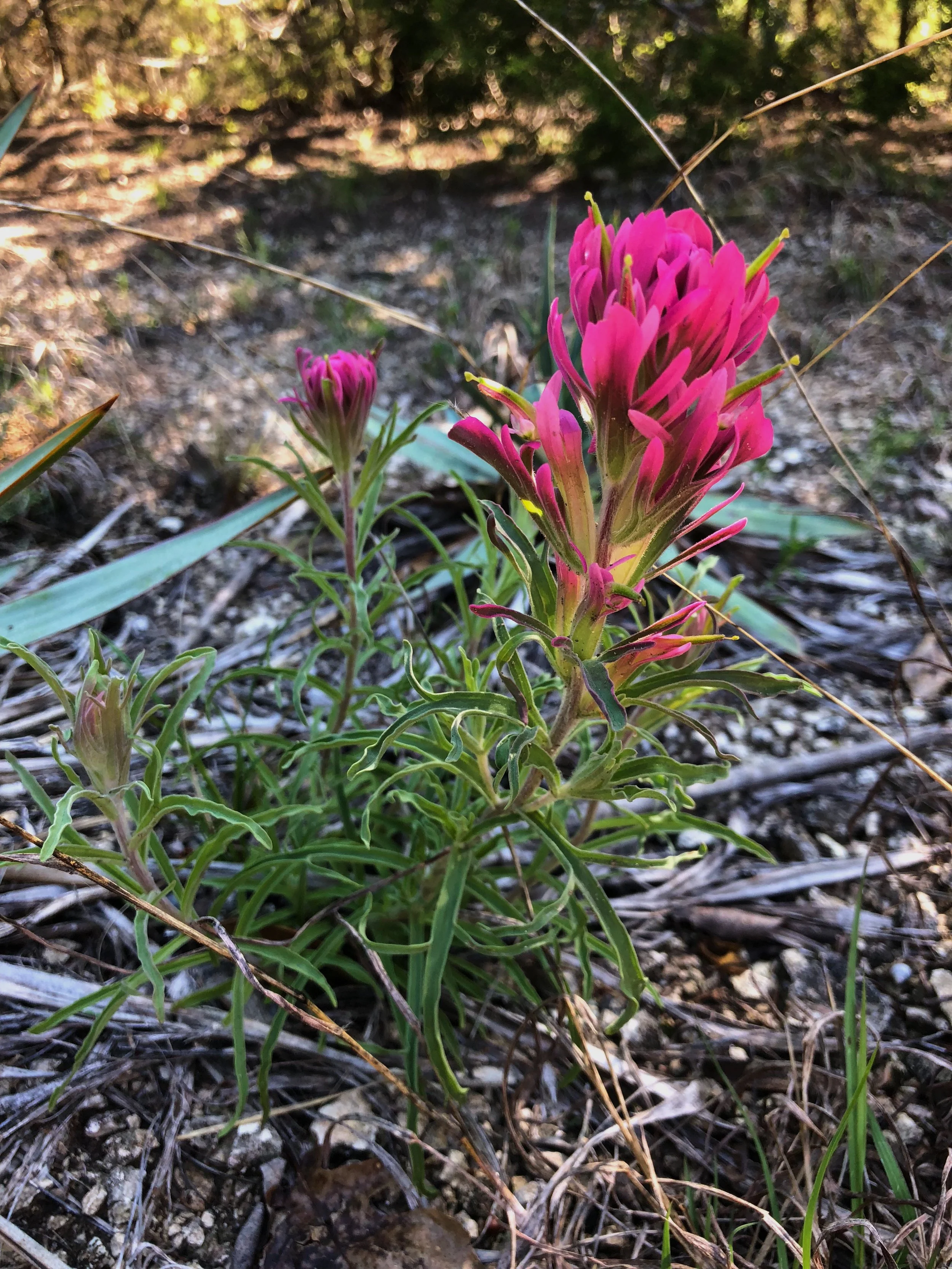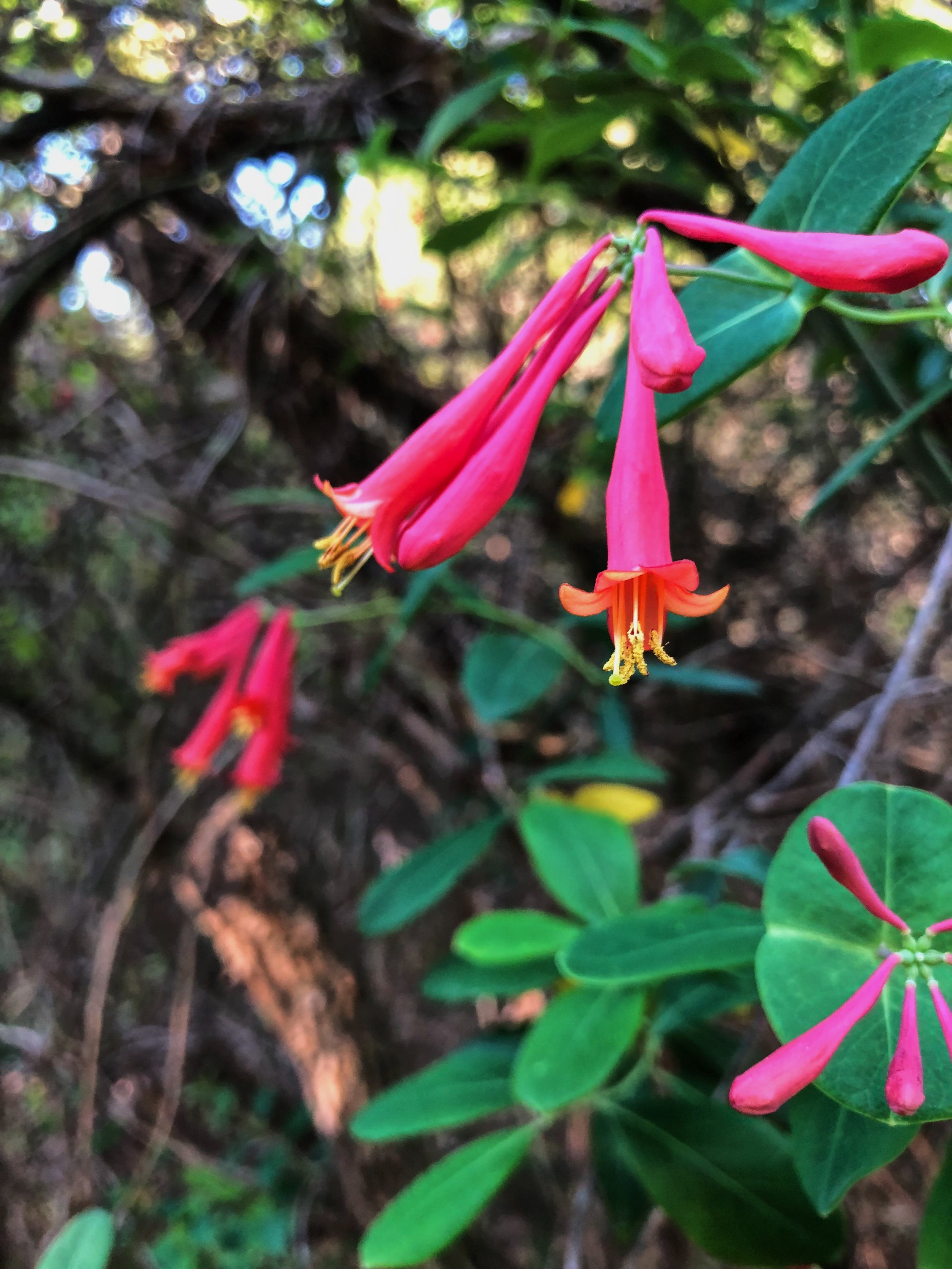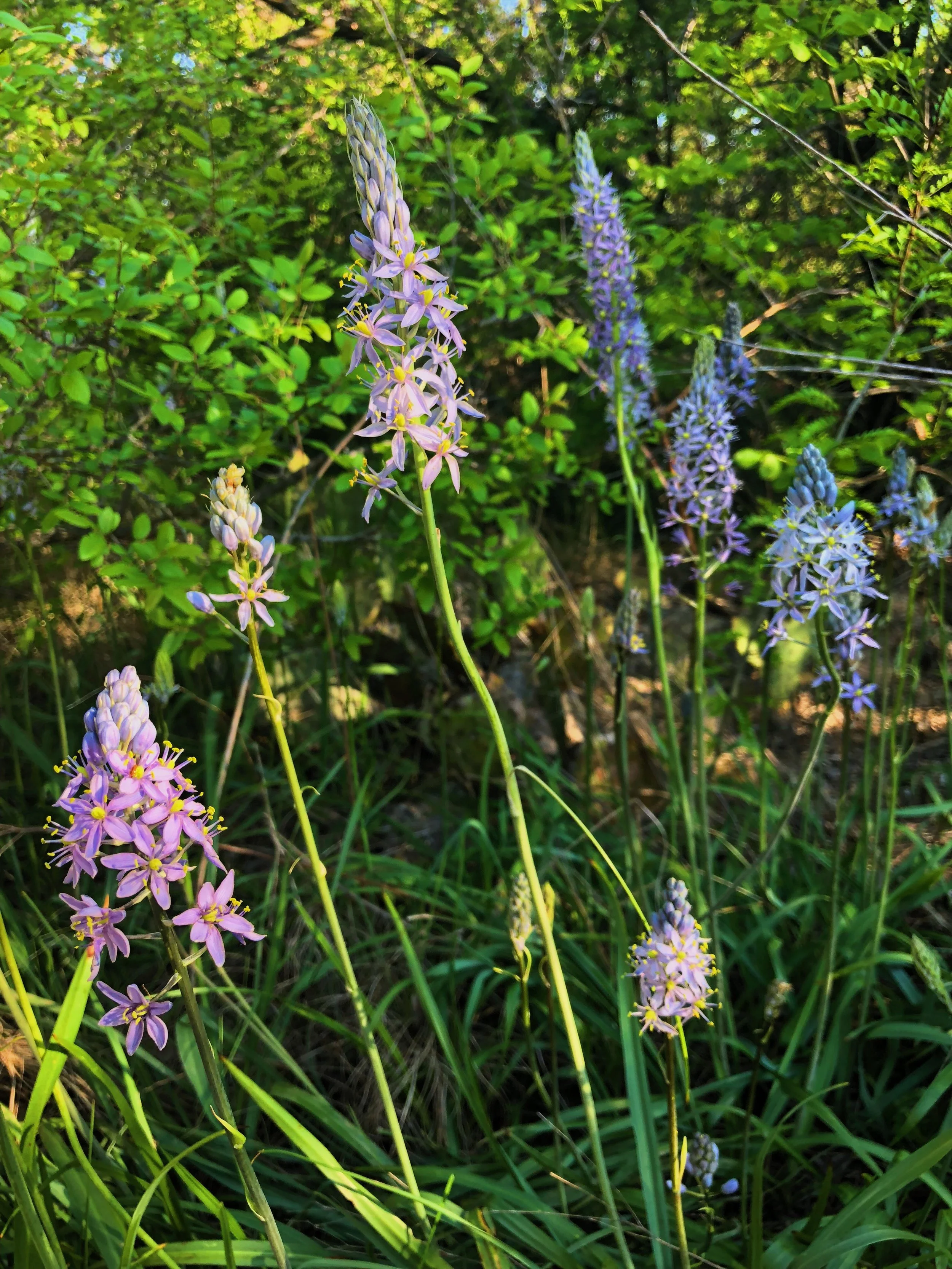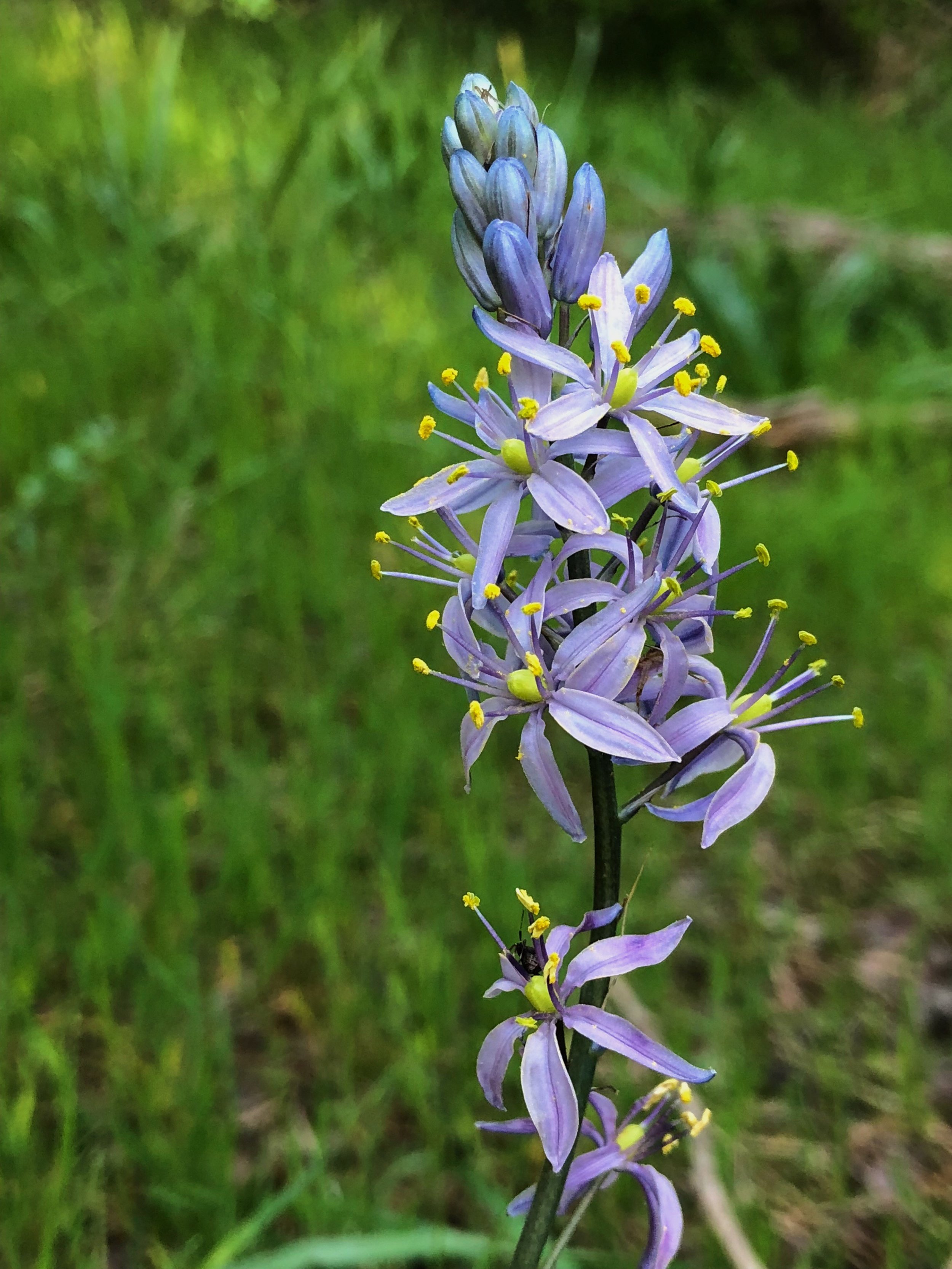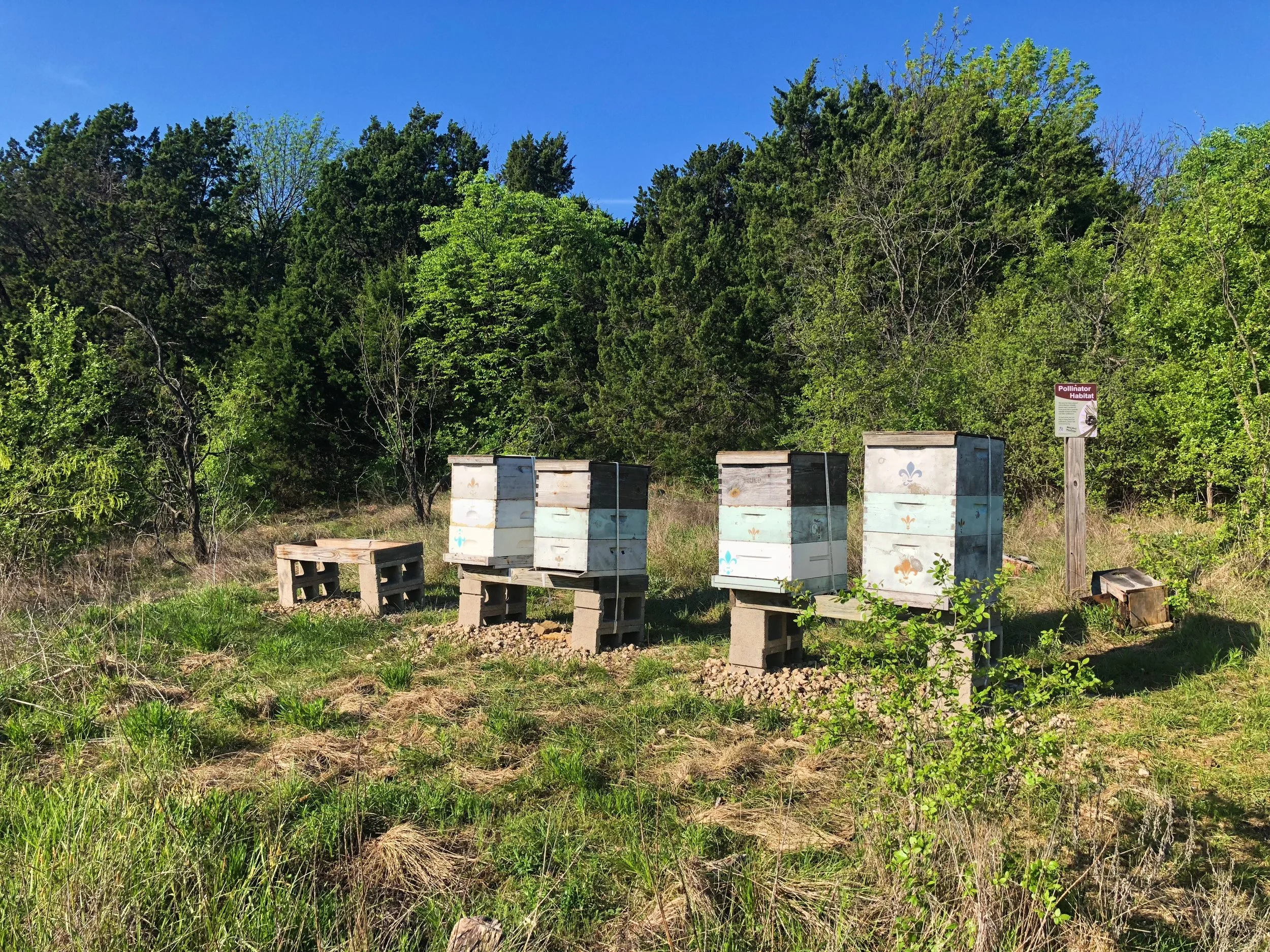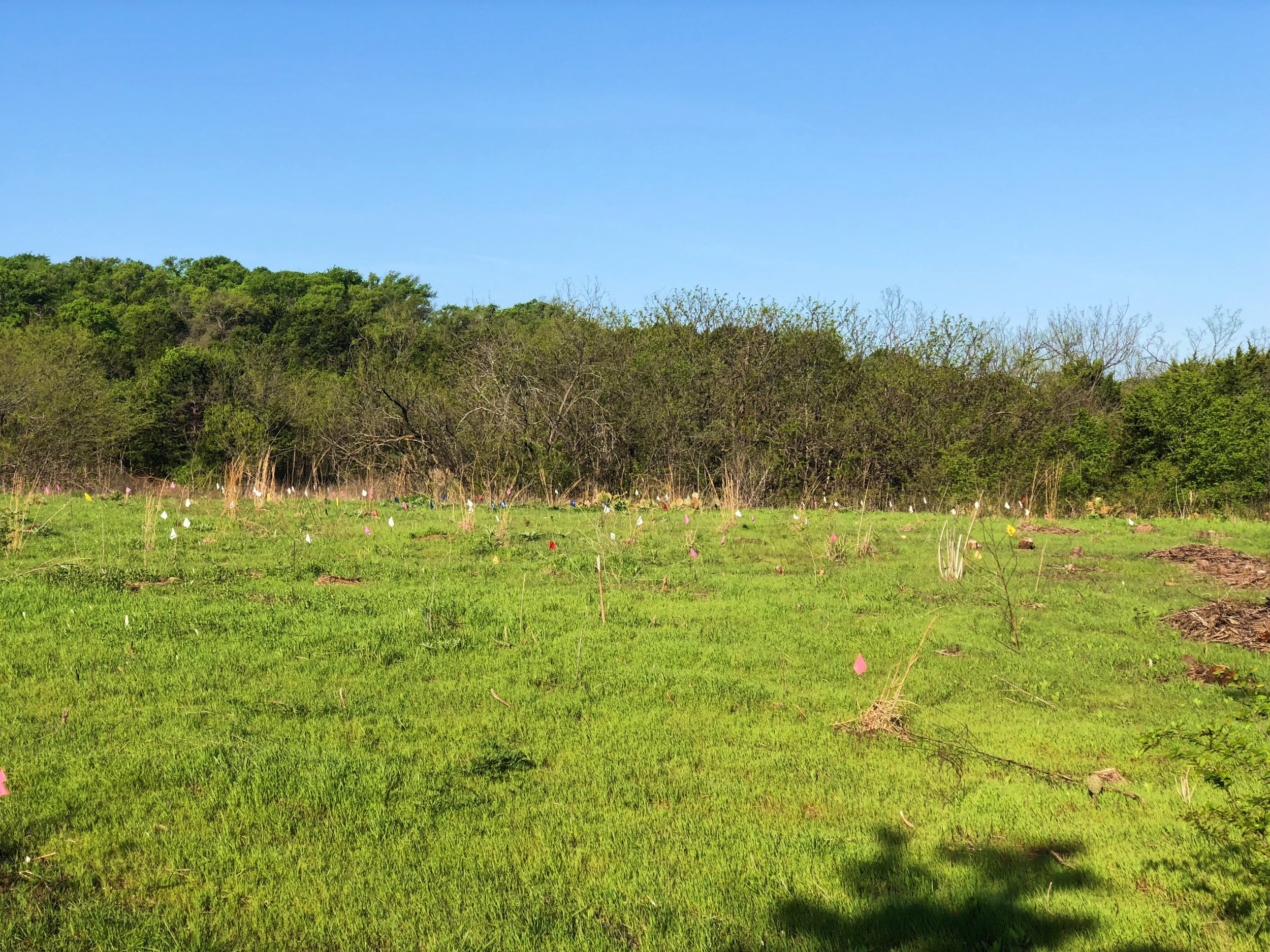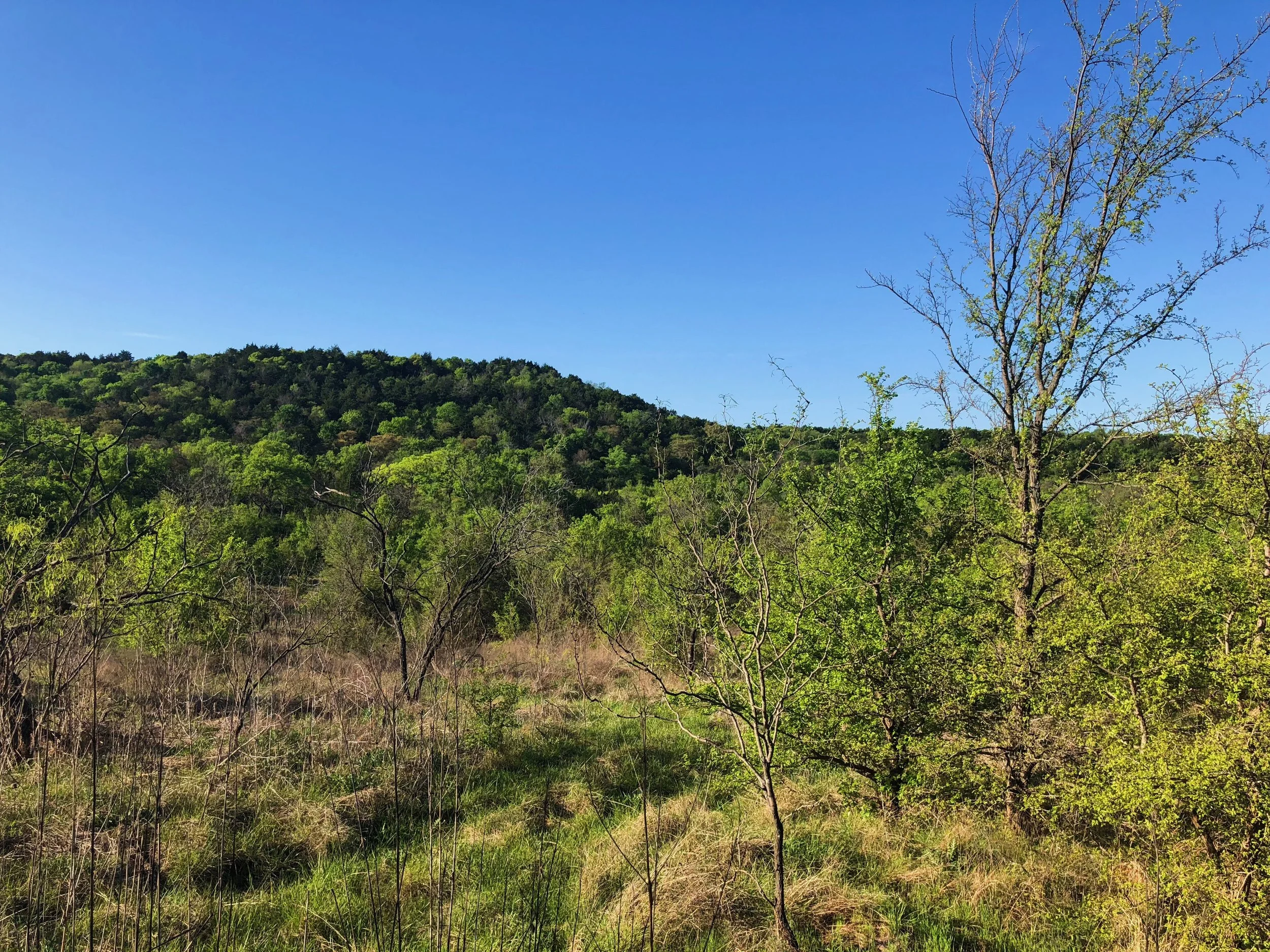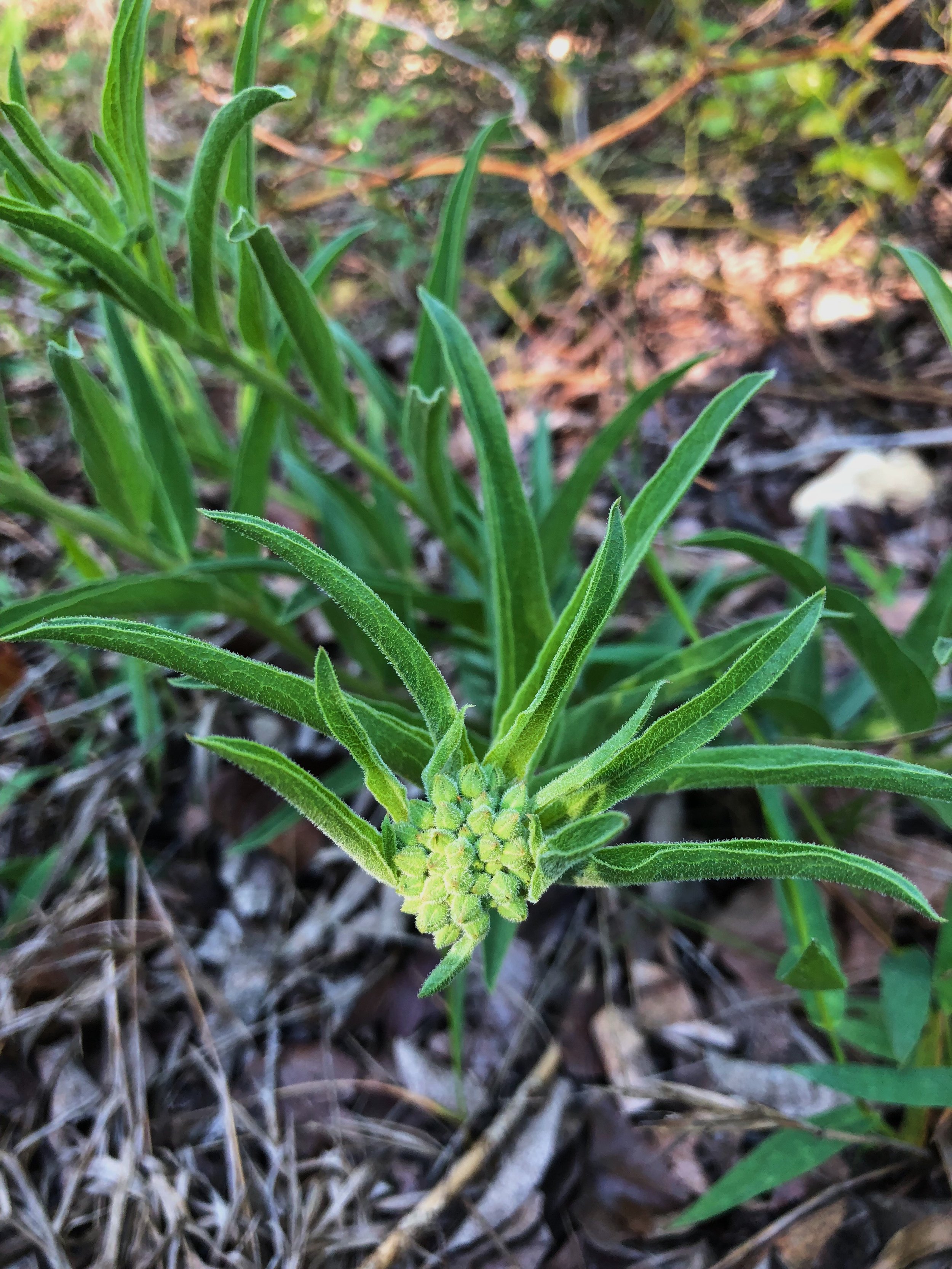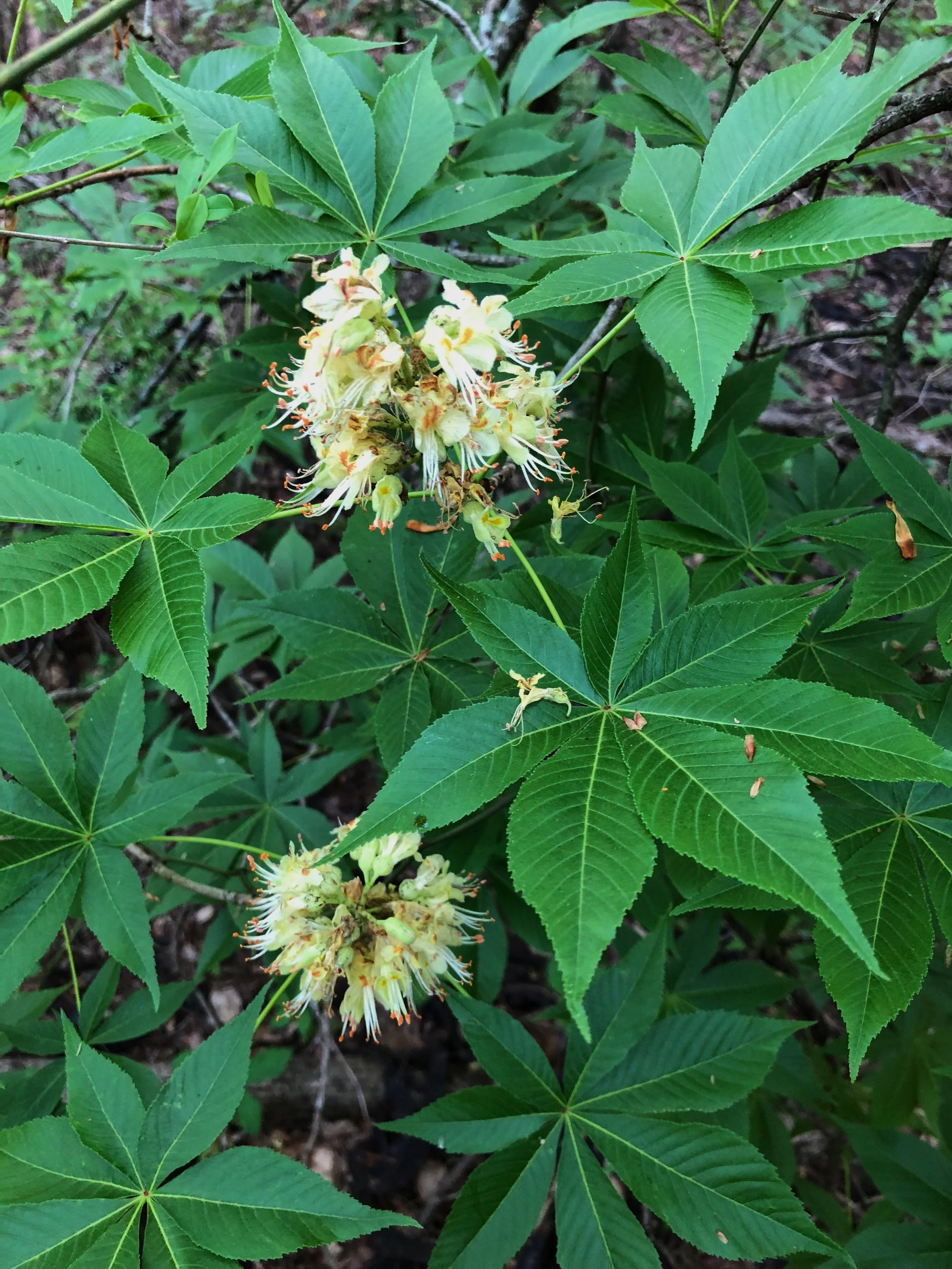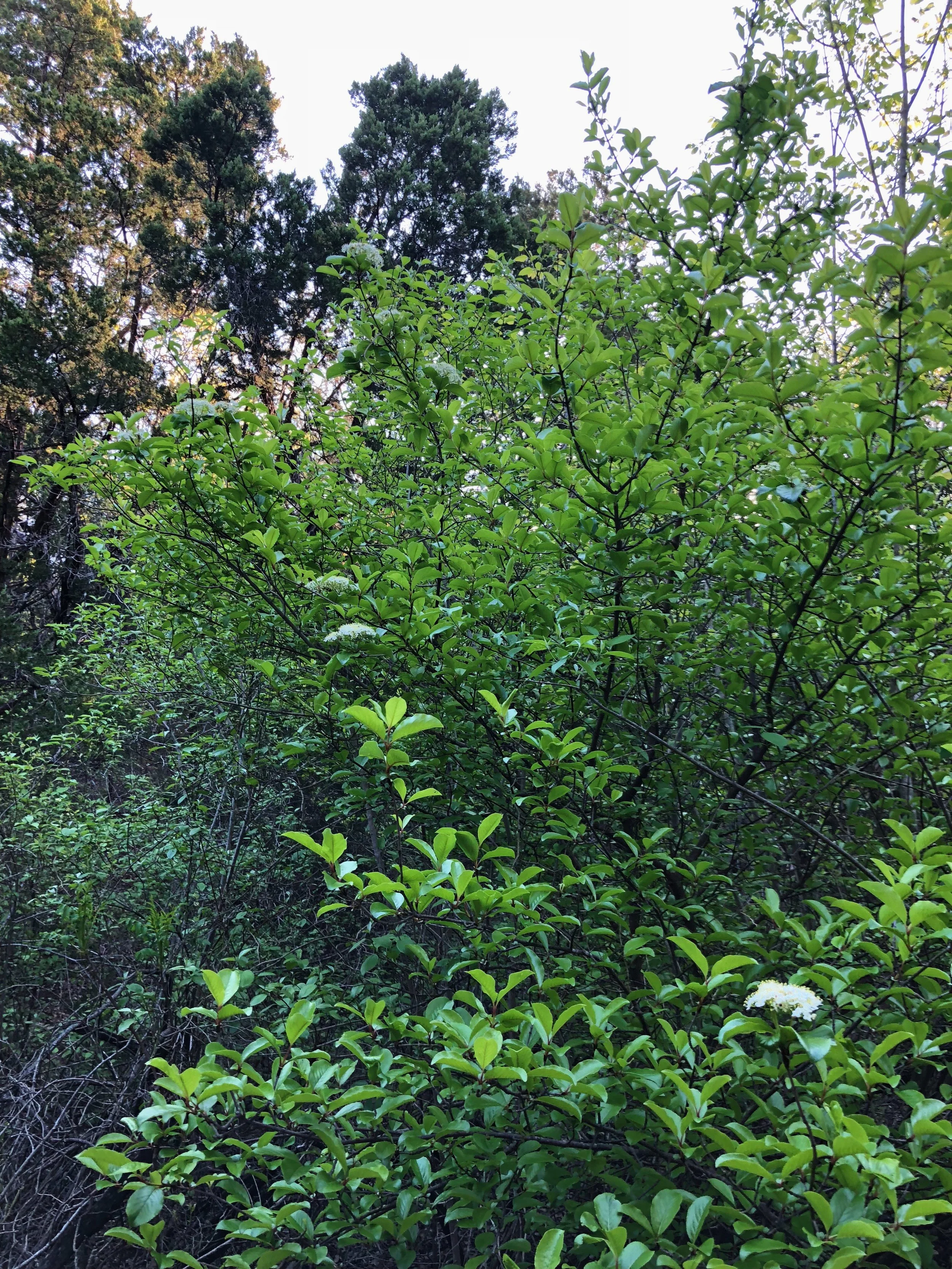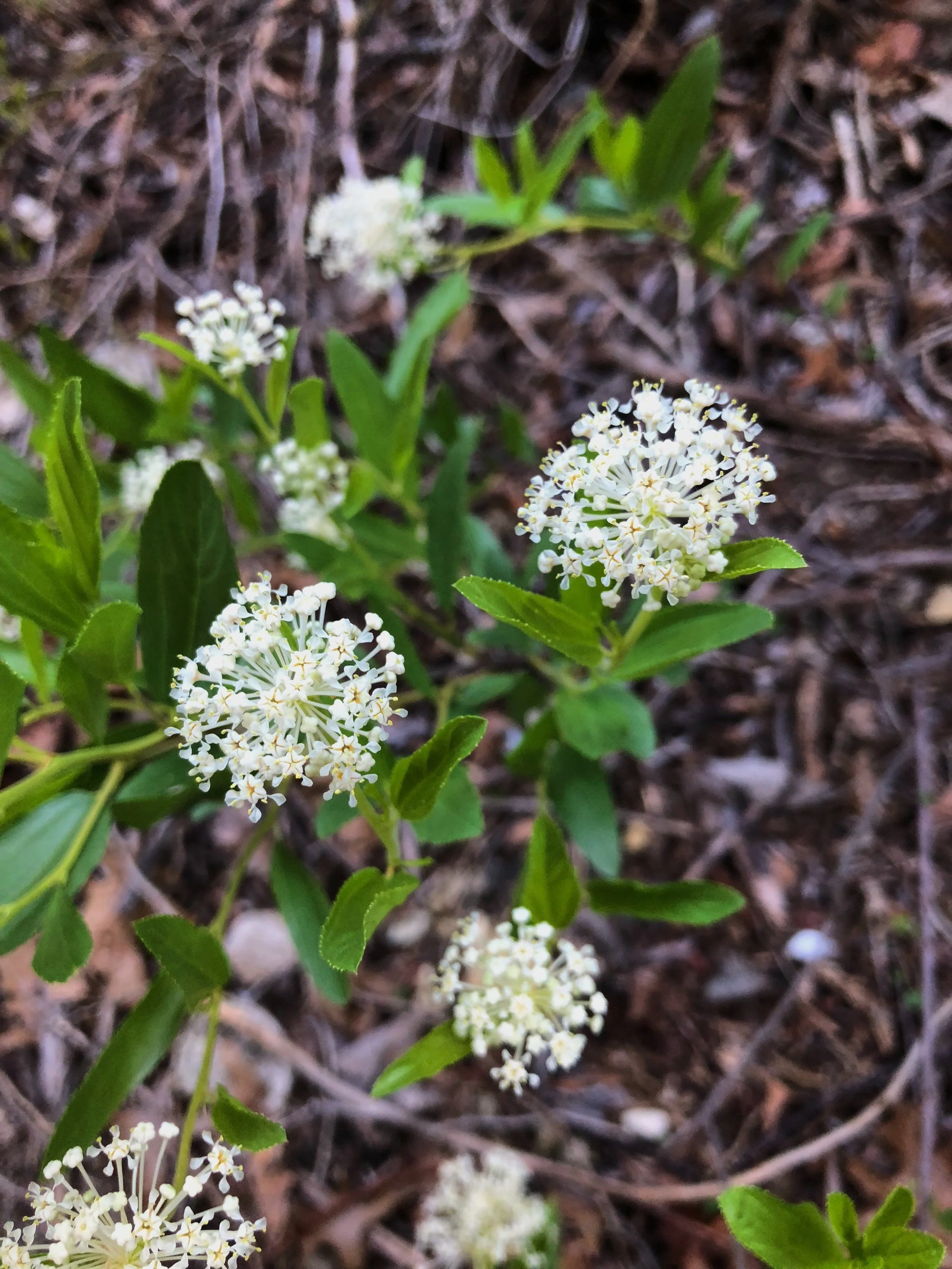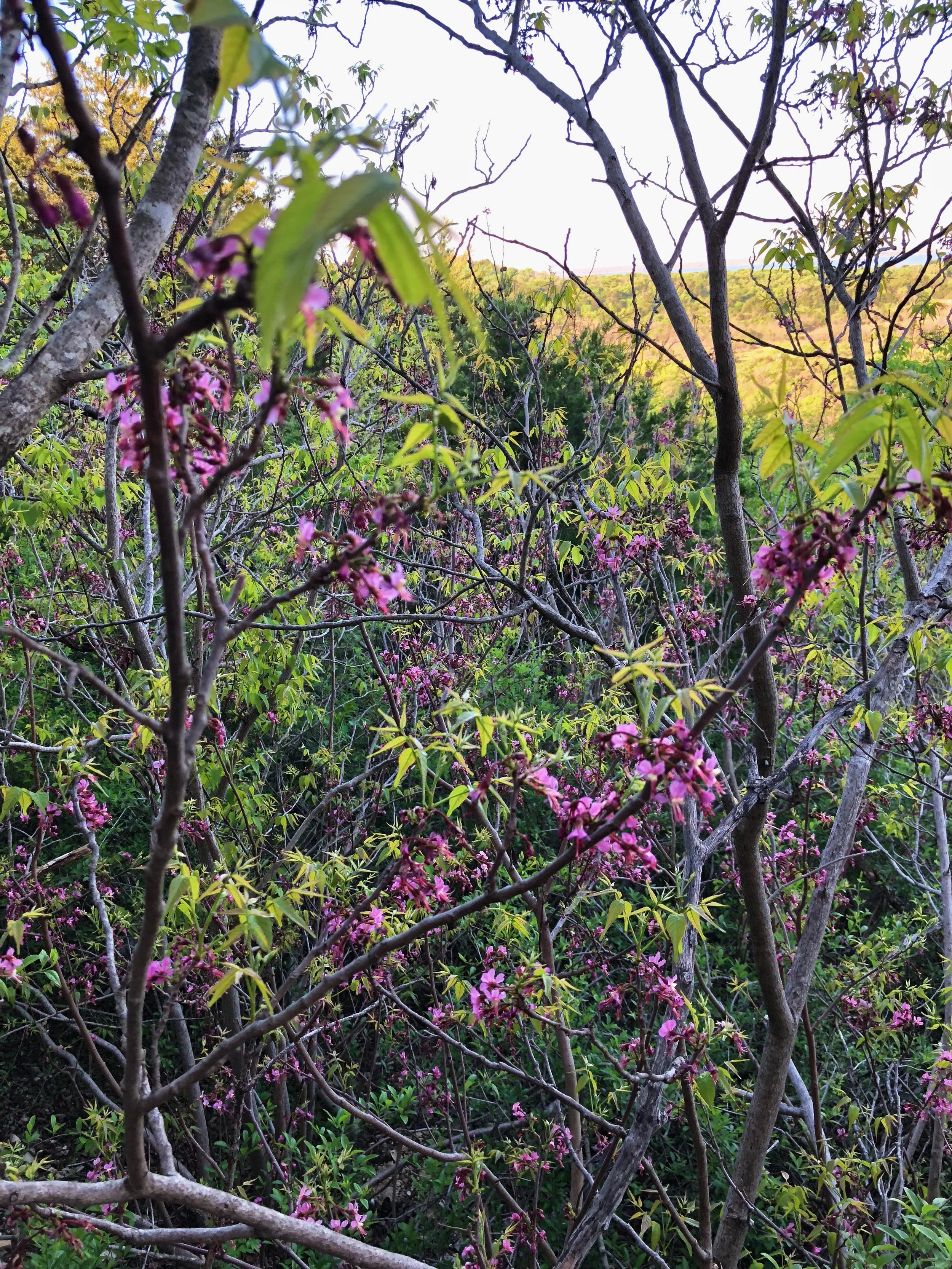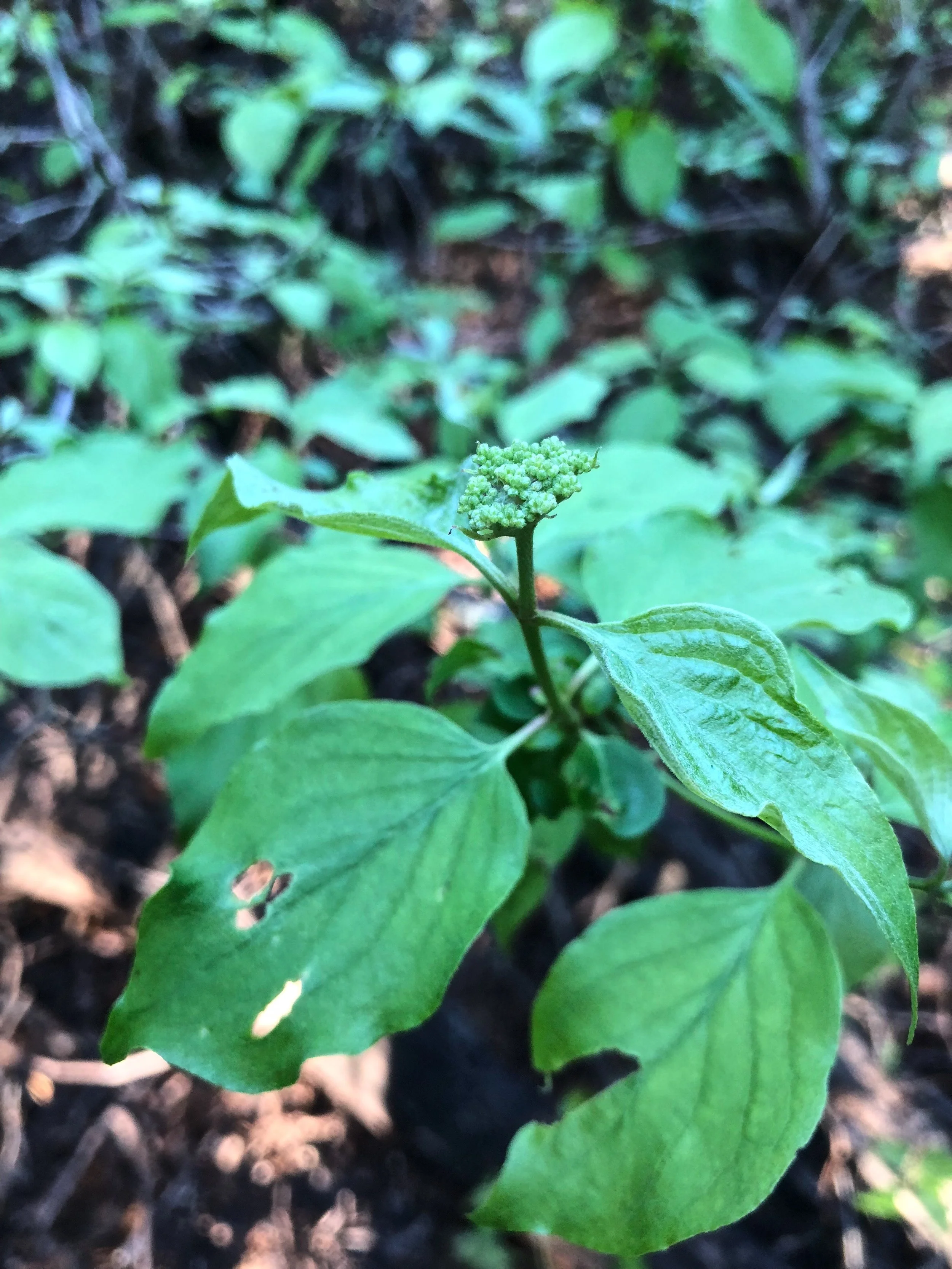Cedar Ridge Preserve
Cedar Ridge Preserve is a 600 acre tract of land just southwest of downtown Dallas, adjacent to Cedar Hill State Park. The preserve is maintained by Audubon Dallas, including the 9 miles of trails among the hilly terrain of juniper and oak forest.
The dominant feature of the preserve is a high point named Cedar Bluff. At 750' elevation, the ridge overlooks Joe Pool Lake 200' below. This area is special in that the limestone hills of juniper and oak forest are a disjointed representation of the Edwards Plateau ecoregion, better know as the Hill Country, which occurs more than 150 miles away. The preserve is also surrounded by sprawling, low-density suburban development, essentially paving all surrounding Blackland Prairie, where you would have found rolling hills of tall grass meadows.
But this area is a bright spot among the asphalt with a network of heavily-traveled trails, and because of the generosity of donors and Audubon Dallas, it is free of charge to visit. Most users come here to exercise, but I enjoy studying the flora more.
A trail through the juniper and oak forest.
Many creeks snake their way between the hills.
Castilleja purpurea, Prairie paintbrush
There are many species of Castilleja native to Texas, and even more are native to North America. Purple Paintbrush can be found from the Texas Hill Country to the Ouachita Mountains and Osage Cuestas of Oklahoma. This species, like many of the genus, are parasitic on the roots of grasses, which is why they are commonly spotted in prairie settings.
Cercis canadensis, Eastern redbud and Lonicera sempervirens, Coral honeysuckle
Lonicera sempervirens, Coral honeysuckle
There are two species of honeysuckle native to Texas: one white and one pink. I spotted this pink honeysuckle intertwined with a redbud.
Erythronium albidum, White trout lily
Trout lilies are a wonderful plant found on the forest floor, and are best known for producing a delicate flower that lasts only for a few days in the very early spring when little else is blooming. They also help serve an ecological theory known as a vernal pool. The idea is that the trout lilies take up nutrients during a time of year when there is very little growth activity in the forest, and these nutrients would be stored for other plants to use when the trout lilies have gone dormant in the summer months. Without the trout lilies to store, and then release these nutrients, they might be washed away in early spring rains, thus escaping use by other species later in the year. Unfortunately, I had missed the brief bloom period that occurred earlier in the spring. Soon enough, this blanket of oblong leaves will shrivel with the rising temperatures of late spring and early summer, only to emerge again in the cooler months.
Erythronium albidum, White trout lily
Erythronium albidum, White trout lily
Erythronium albidum, White trout lily
Erythronium albidum, White trout lily
Camassia scilloides, Wild hyacinth
This was my first time observing this wild hyacinth species, and it was really a treat to find. In Austin along Slaughter Creek, I found Toxicoscordion nuttallii (Death camas) several years ago. These wild hyacinths are closely related to death camas, but one defining difference is their toxicity. Wild hyacinth bulbs were actually used by Native Americans as food.
Camassia scilloides, Wild hyacinth
Camassia scilloides, Wild hyacinth
Camassia scilloides, Wild hyacinth
Camassia scilloides, Wild hyacinth
Camassia scilloides, Wild hyacinth
Another creek that eventually empties into Joe Pool Lake.
Bee boxes managed by Audubon Dallas.
Planting project re-introducing native species.
Liatris sp., Gayfeather
This liatris is just emerging from its winter dormancy. Later into the warm months, bolts of purple flowers will jump skyward. These plants are wonderful sources of food for pollinators, and will be available during the heat of summer when many other blooms have passed.
Shallow falls along a creek with a limestone bed.
Elm, cedar, and oaks dominate the hilly landscape.
Asclepias asperula, Antelope horns milkweed
In north Texas, Antelope horns milkweed is one of the most common Asclepias species. It characteristically lies nearly prostrate to the ground and has narrow leaves that resemble the antlers of antelope. These buds are just beginning to form.
Lithospermum incisum, Fringed puccoon
Fringed puccoon is unique in that it has two different bloom cycles with two different blooms. Shown here is the first bloom, a showy flower, and then a second round of tiny, inconspicuous blooms occur in fall. It is from these smaller blooms that fertile seed is produced. Actually, they are self-fertile and seed is produced without the flowers ever opening.
Berries of Juniperus virginiana
Aesculus glabra var. arguta, Texas buckeye
My previous post was centered around the Texas buckeye population along the Trinity River southeast of Dallas. I was pleased to also find these in the Cedar Ridge Preserve.
Viburnum rufidulum, Rusty blackhaw viburnum
Viburnum rufidulum, Rusty blackhaw viburnum
Rusty blackhaw viburnum is the most commonly-found viburnum in Texas, and Dallas is near the western edge of its native range. In the spring, these deciduous shrubs are topped with these clusters of white blooms. In the fall, these leaves turn all shades of orange and yellow.
Ceanothus herbaceus, New Jersey tea
This plant occurs from the Texas Hill Country up through the Great Plains of the US. It is a larval host for the Mottled Duskywing moth, and prefers a more dry and well-draining sites like limestone outcrops. In the fall, it will bear a small, brown fruit and drop its leaves.
Ungnadia speciosa, Mexican buckeye
Ungnadia speciosa, Mexican buckeye
Much like the community I found on the slopes of the surrounding hills of Ranger Creek, these small trees were clinging to the limestone breaks. In the early spring for a few weeks, the buckeyes bloom at the same time that they put on new foliage. These blooms will then drop and produce a three-lobed pod containing black seeds.
Ungnadia speciosa, Mexican buckeye
Yucca pallida, Pale-leaf yucca
This yucca has a nearly icy blue hue to its relatively wide-bladed leaves. You will only find this species in Texas, and only in a handful of counties in the central and north central areas of the state. Soon enough, sentinels of creamy white blooms will emerge from the centers of the plants, rising 4 feet or higher.
Yucca pallida, Pale-leaf yucca
Rhus aromatica, Fragrant sumac
This species of sumac can be found in nearly every state in the lower 48. It is named for the small, fragrant flowers that eventually give way to red berries. These fruit will stay on as an available food source for birds and other small animals through the following winter.
Cornus drummondii, Roughleaf dogwood
At first glance, one may mistake this dogwood for a viburnum. Their blooms are very similar, but you can identify the dogwood by its leaf shape. Most are familiar with large, single-petal blooms on dogwoods, but the blooms of this species occur in clusters.
I was really impressed with this little slice of nature within the Dallas city limits. It is especially notable for its extreme changes in topography. In a few weeks, I hope to be back to see a few more blooming species.

